Rapid Response™ Urine Analyzer - an efficient and accurate tool for interpreting Rapid Response™ Urinalysis Reagent Strips results. Read, store, and print results in under 2 minutes.
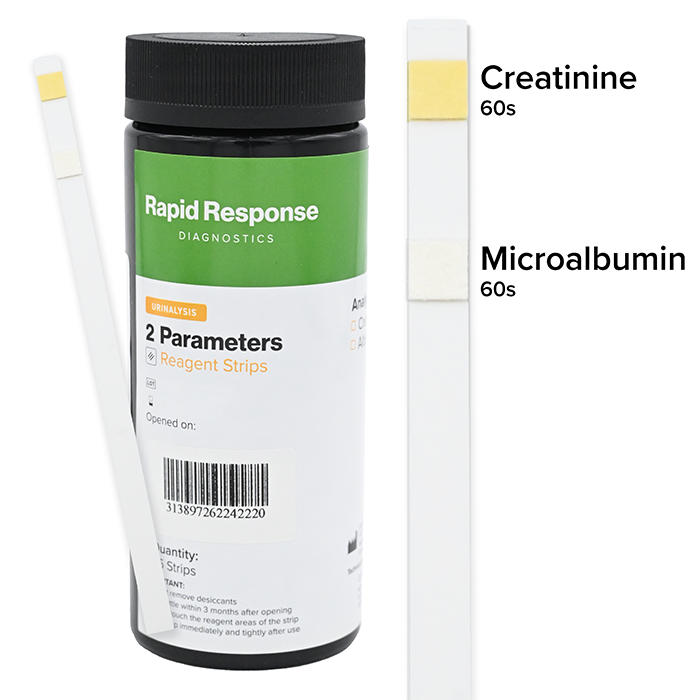
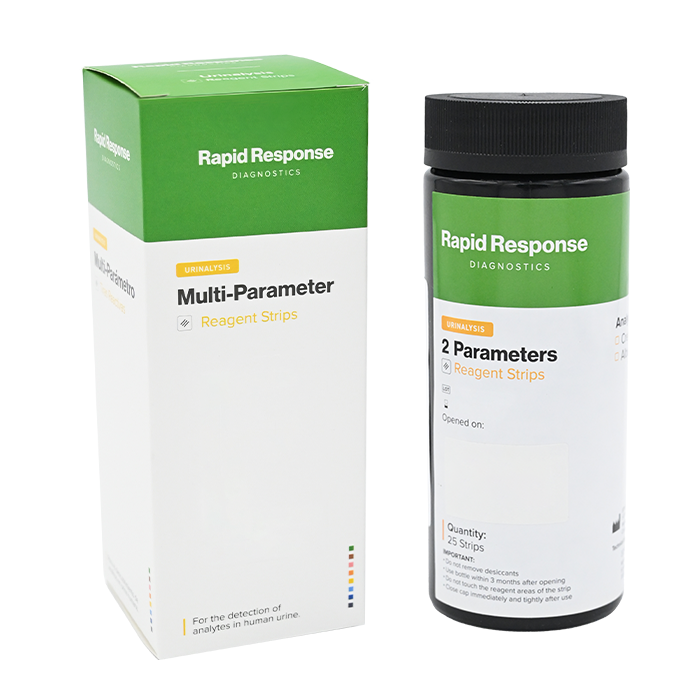
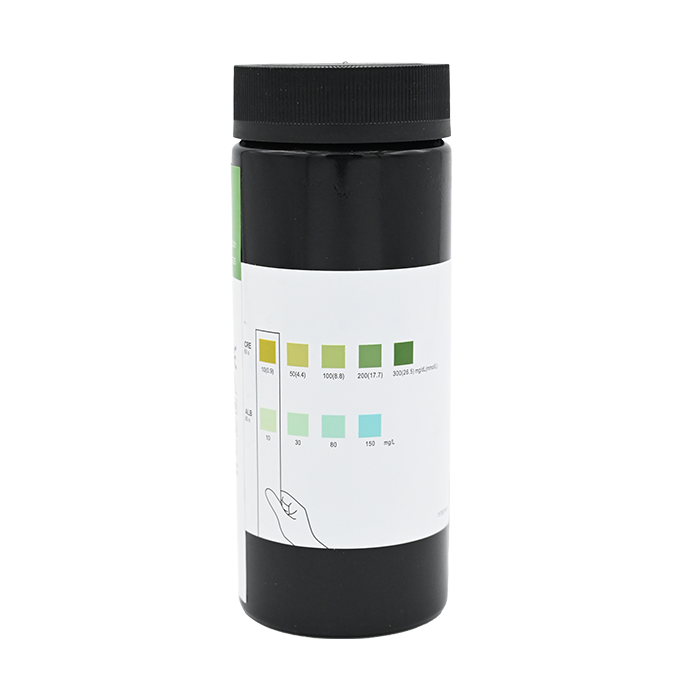
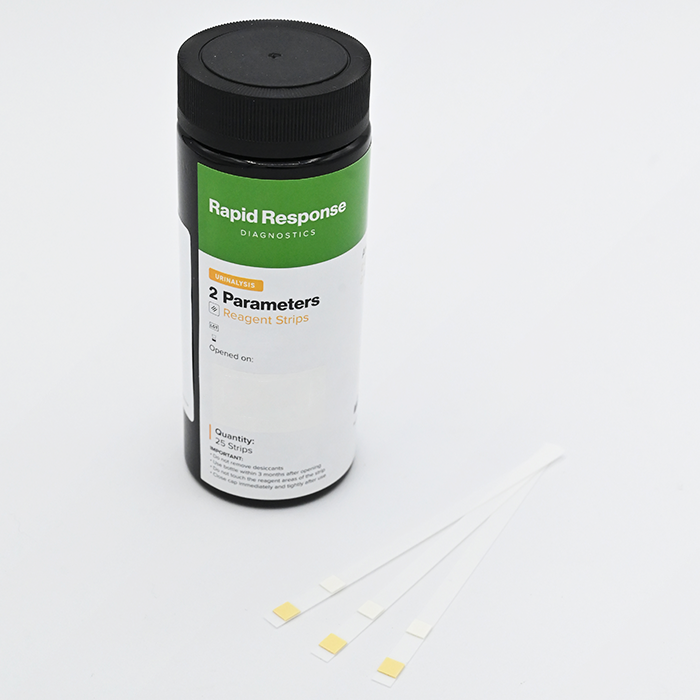
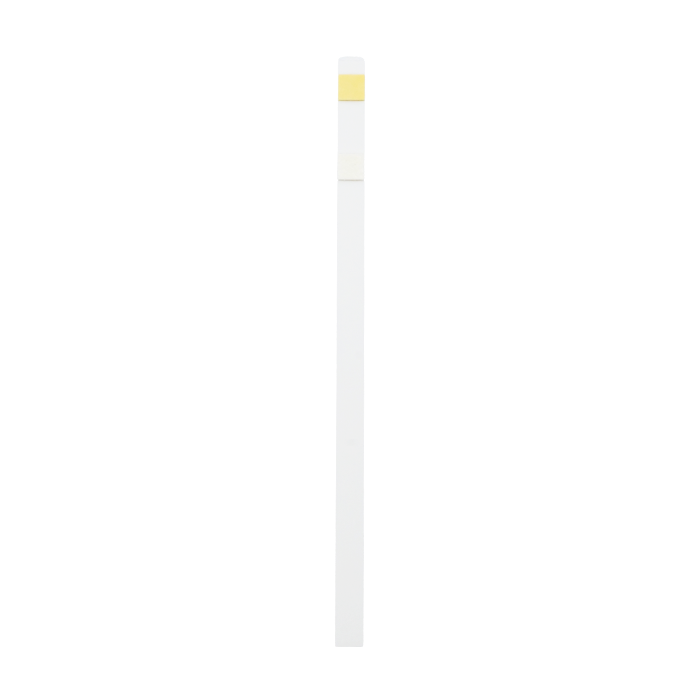





The Rapid Response™ Urinalysis Reagent Strips (Microalbumin/Creatinine) is intended for the semi semiquantitative measurement of albumin (and creatinine (CRE) in urine. For use with the Rapid Response™ U120S Urine Analyzer. Results are used to aid in the diagnosis of kidney function. This test is for professional use only. For use at the point of care. Positive results should be confirmed with quantitative method.
Compatible with the Rapid Response™ Urine Analyzer U120. To learn more, visit the U121S product page.
The Rapid Response™ Urinalysis Reagent Strips (Microalbumin/Creatinine) is intended for the semi semiquantitative measurement of albumin (and creatinine (CRE) in urine. For use with the Rapid Response™ U120S Urine Analyzer. Results are used to aid in the diagnosis of kidney function. This test is for professional use only. For use at the point of care. Positive results should be confirmed with quantitative method.
Compatible with the Rapid Response™ Urine Analyzer U120. To learn more, visit the U121S product page.
Detects Microalbumin and Creatinine
Read results within 2 minutes
Compatible with the Rapid Response™
Urine Analyzer U120S
Disease or other health problems an cause urine to change before major change is seen in the blood. A urine test is a useful signal of health or disease. It can also play a part in routine health screening. The test can screen for microalbuminuria and helps find patients at risk of early early-stage kidney damage. Patients with diabetes or high blood pressure are at highest risk. Also at risk are those with immune disorders or who have been exposed to kidney toxins. Microalbuminuria may also be an early sign of preeclampsia in the pregnant.1

- Completely immerse the reagent areas of the strip in fresh, well-mixed urine.
- While removing the strip from the urine, run the edge of the strip against the rim of the urine container to remove excess urine.
- Compare the reagent areas to the corresponding color blocks on the canister label at the specified times.
Instructions simplified for illustrative purposes. Always read and follow the product insert or user manual before

Test with the Rapid Response™ U121S Urine Analyzer.
1. Scan the barcode on the side of the canister or type the code into the U121S Urine Analyzer using the touchpad
2. Completely immerse the reagent areas of the strip in fresh, well-mixed urine.
3. Insert the strip into the U121S Urine Analyzer.
4. Wait for the U121S to print the results.
To learn more visit the U121S product page.
Albumin (ALB)
Detects albumin as low as 10mg/mL
A result of 20-200 mg/L may signal microalbuminuria. This may suggest early-stage kidney disease. Results of >200 mg/L indicate clinical albuminuria. These levels may predict albumin excretion rates of 30-300 mg/24 hrs and >300 mg/24 hrs, respectively.1 Exercise, acute illness and fever, and urinary tract infections may raise urine albumin for a time.
Creatinine (CRE) 60 Seconds
Detects creatinine as low as 10mg/mL
In this assay, creatinine reacts with a creatinine indicator in an alkaline condition to form a purplish-brown color complex. The concentration of creatinine is directly proportional to the color intensity of the test pad. A normal urine creatinine level is 10 -300 mg/dL.
Albumin-to-Creatinine Ratio:
30 -300 mg/g (abnormal) shows microalbuminuria. Higher than 300 mg/g (high abnormal) shows clinical albuminuria.5
Microalbuminuria, an abnormal elevation of the urinary albumin excretion rate, is often one of the first signs of renal disease or damage that can lead to renal failure1. Patients with hypertension or diabetes have the highest risk of renal disease where microalbumin may be present3,4. Microalbuminuria refers to small detectible amounts of albumin in the urine. Creatinine is a byproduct of muscle metabolism and creatinine excretion into the urine is usually constant5. Creatinine measurement is used in the diagnosis and treatment of renal diseases, to monitor renal dialysis, and as a calculation basis for measuring other urine analytes.

The BTNX Rapid Response Tests undergo regular evaluation using proficiency samples from CAP (College of American Pathologists).
- Nisell, H. et al: Renal Function in Gravidas with Chronic Hypertension With and Without Superimposed Preeclampsia. J. Hypertens. Pregnancy 15: 127-134; 1996.
- Burtis, C.A. and Ashwood, E.R.: Tietz Textbook of Clinical Chemistry , 3rd ed. Philadelphia: Saunders; 1999; pp. 483-484.
- Mangili, R. et al.: Prevalence of Hypertension and Microalbuminuria in Adult Type 1 (Insulin-Dependent) Diabetic patients Without Renal Failure in Italy-Validation of Screening Techniques to Detect Microalbuminuria. Acta Diabetol . 29: 156-166; 1992.
- American Diabetes Association, Clinical Practice Recommendations, Diabetes Care, Vol. 31, Suppl. 1, January 2008.
- Position Statement: Diabetic Nephropathy. Diabetes Care 20: S24-S27; 1997.
- Please note that certain products may only be available in specific regions; kindly consult with a sales representative for further information regarding product availability.
- The information provided on this website is for educational purposes only and should not be construed as medical advice. Always consult with a qualified healthcare professional regarding any medical concerns or conditions.
- Our products are intended for use as specified in the product documentation. It is important to carefully read and follow all instructions provided with the product.
